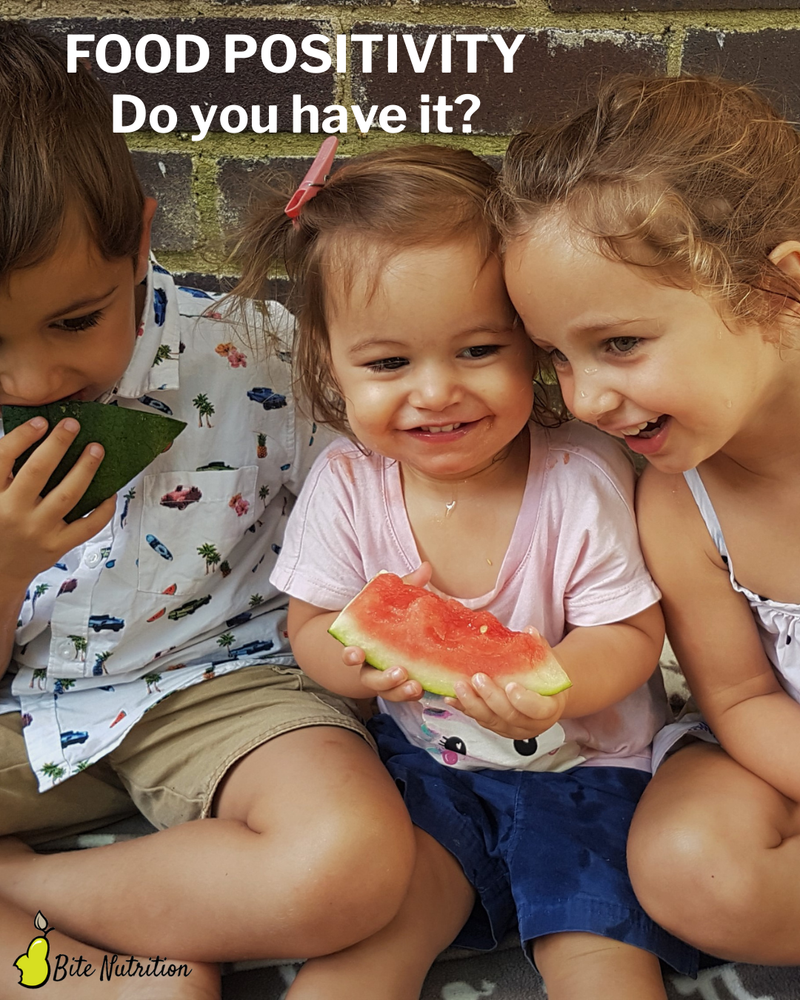Food Positivity for Kids: How to Nurture a Healthy Relationship with Eating

Do you know anyone who has no hang-ups around food or eating? And I mean really know them; not an influencer online, or a friend-of-a-friend but someone close to you. Someone who eats when they’re hungry, stops when they’re full, and mostly chooses food for nourishment?
If you’re like most people, the answer is probably no. At best, you might be able to think of one or two people in your whole life. Some people appear to have it all sorted, but often it’s just a façade. What really happens when no one’s watching?
As Dietitians, we work with people of all shapes, sizes, ages, and backgrounds. Food and eating are deeply personal, and to truly help, we need to understand the whole person; including their history, habits, and experiences. Our role is to provide a safe, non-judgmental space where nothing is “too strange” or “too shameful” to share. Believe me, we’ve heard it all before.
Finding someone with a positive (or even neutral) relationship with food is like finding a diamond in the rough. You can’t help but wonder "how did they figure it out?" What experiences shaped their ability to keep food in perspective, without all the “noise” and obsession? For most people, their relationship with food is tangled up with stories, pressures, and even trauma. Unpacking that complexity is often the first step before we can support them to lift the physical and emotional weight tied to eating.
Starting Earlier
Our motivations around food are some of the biggest determinants of health. That’s why I chose to study psychology alongside nutrition. And after two decades of working with adults, I’ve realised something important: if we want to shift the needle on food positivity, we need to start earlier.
Most of us formed our food habits and beliefs in childhood; and once they’re set, they can harden like concrete. Life adds layer upon layer, making them even harder to shift. So, if we want the next generation to have a healthier, calmer relationship with food, we have to begin with awareness; our own and theirs.
Here are some simple ways to build food positivity in children and place food where it belongs: nourishment and health first, pleasure second.
Do’s
-
Speak positively about food and highlight the good things about healthy eating.
-
Model balanced eating and a willingness to try new foods.
-
Involve kids in meal planning, shopping, and cooking.
-
Talk about food in terms of life, nourishment, and joy.
-
Create a calm mealtime environment: limit screens and stressful conversations.
-
Eat meals together as a family so children can observe positive habits.
-
Discuss different eating patterns (e.g., vegetarian, gluten free) without judgement. This normalises diversity and reduces shame.
-
Offer choices within healthy options and guide kids to make informed decisions.
-
Show a positive attitude towards body image; demonstrating that health and happiness come in many sizes.
Don’ts
-
Don’t label foods as “good” or “bad.”
-
Don’t use food as a bribe, reward, or punishment.
-
Don’t talk about avoiding foods to lose weight or fit into clothes.
-
Don’t centre food discussions on weight, calories, or dieting.
-
Don’t force children to “clean their plate.” Let them learn to recognise hunger and fullness cues.
By being mindful of how we talk about food and how we act around it, we can give kids a better start than many of us had. Food should nourish body and mind, support long-term health, and yes, bring joy. But it should never be a source of guilt, shame, or fear.
If you are in Australia and need support in creating some Food Positivity, for you or your family, don't hesitate to reach out for a Free 15 Minute Dietitian chat. Let's see if we can help you further with one of our online services.

